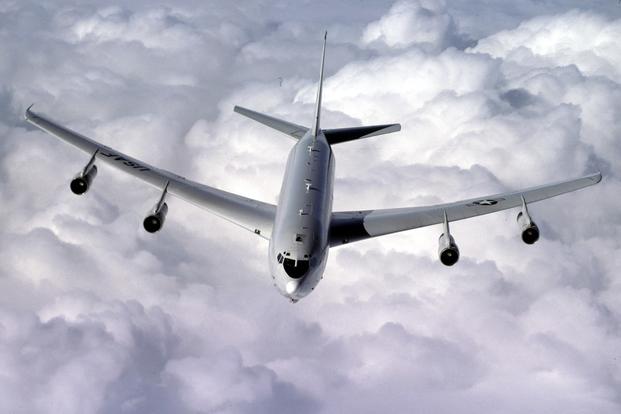The push to upgrade the JSTARS fleet may be over as both the House and Senate have chosen to ax the recapitalization plan in favor of the U.S. Air Force's alternative solution.
Both versions of the 2019 National Defense Authorization Act grant additional funding for the next-generation Advanced Battle Management System in lieu of a new E-8C Joint Surveillance Target Attack Radar System fleet, according to the conference bill.
The Air Force may retire its JSTARS legacy aircraft once the ABMS system reaches "increment 2" in initial operating capability, the document says.
While it is unclear how that will be determined or when it will occur, lawmakers have also required the defense secretary to "certify that the Secretary of the Air Force is: taking all reasonable steps to ensure the legacy E-8C continues to meet all safety of flight requirements and that the Air Force is taking steps to increase the legacy JSTARS fleet's aircraft availability and capacity provided to combatant commanders," the conference bill states.
Related content:
- Air Force's New Battle Management System Will Be Based at Robins
- Lawmakers Push to Keep Air Force JSTARS Recap Program
- Congress Moves Closer to Suspending Sales of F-35 to Turkey
The bill adds $120 million for MQ-9 Reaper drones to "accelerate the development of the Advanced Battle Management System."
The ABMS is intended to replace the current JSTARS fleet, which will keep flying until the mid-to-late 2020s.
The latest language puts to bed months of debate surrounding JSTARS future.
Last month, officials announced that Robins Air Force Base, Georgia -- which currently houses all 16 E-8Cs -- was selected to host the elite system, which will fuse intelligence, surveillance and reconnaissance sensor data from around the world to provide situational awareness for combatant commanders. Officials have said remotely piloted aircraft such as the MQ-9 will be plugged into such a network for additional situational awareness.
The budget bill requires regular reports on the status, maturity and progression of ABMS among other programmatic updates. It also asks Defense Department officials to look into what to do with millions of dollars worth of spare parts the Air Force procured in 2007 for the E-8C.
"The conferees understand the Secretary of the Air Force procured three ship-sets of engines, after investing $450.0 million, and the engines remain unused," it said. "The conferees note that the legacy E-8C engines are the number one issue driving excessive non-mission-capable maintenance metrics for the E-8C fleet."
The Air Force in February said it would not move forward with the JSTARS recapitalization program even after the service in 2016 launched a $6.9 billion request for proposal for the engineering, manufacturing and development phase of the upgraded aircraft.
It had planned to buy 17 new aircraft.
-- Oriana Pawlyk can be reached at oriana.pawlyk@military.com. Follow her on Twitter at @Oriana0214.










